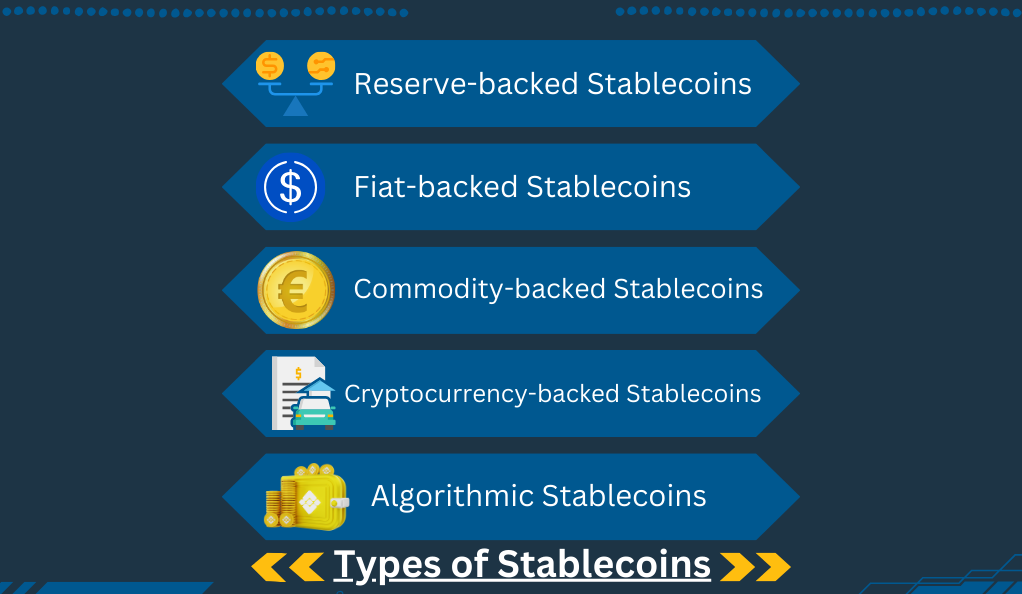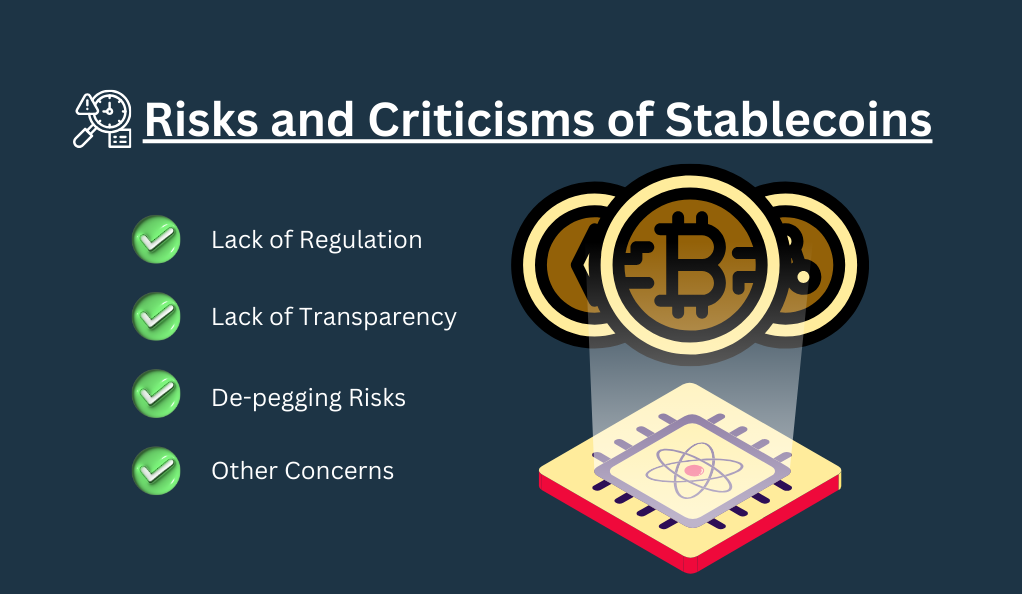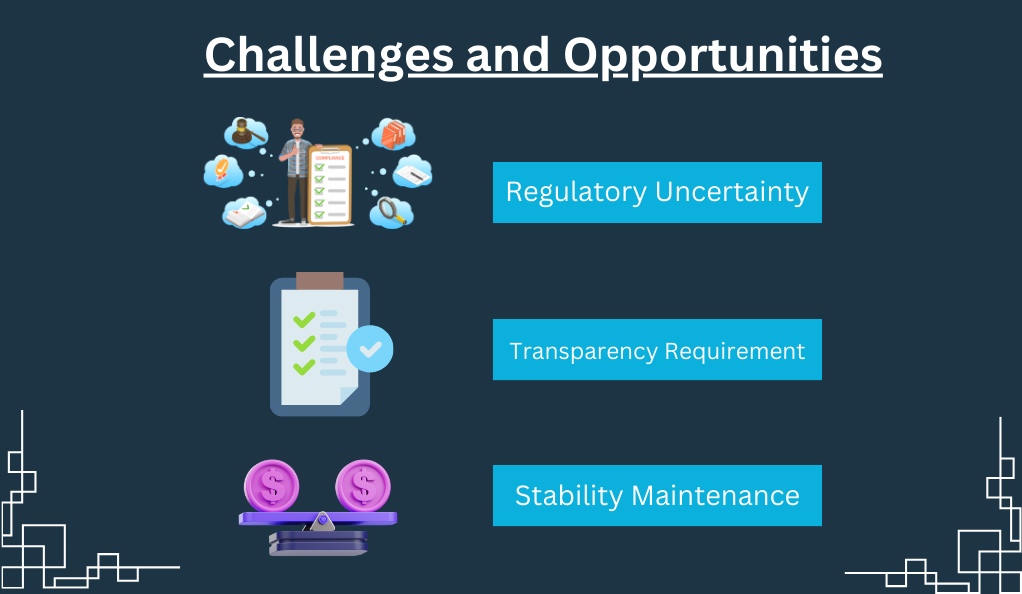In the ever-evolving world of cryptocurrencies, stability is a prized possession. Amidst the highs and lows of digital currencies, stablecoins have emerged as a beacon of steadiness. But what exactly are stablecoins, and why do they hold such a crucial role in the crypto ecosystem?
Defining Stablecoins
Stablecoins are a unique type of cryptocurrency designed to maintain a stable value over time. Unlike their more volatile counterparts like Bitcoin and Ethereum, stablecoins are pegged to a reference asset. This asset could be a fiat currency like the US Dollar, a commodity like gold, or even another cryptocurrency. The primary goal is to offer the benefits of digital currency without the wild price fluctuations.
The Mechanism Behind Stability
The stability of a stablecoin is achieved through a 1:1 backing by a reference asset. For every stablecoin issued, there is an equivalent amount of the reference asset held in reserve. This ensures that the stablecoin can always be redeemed for its underlying value, providing a safety net against volatility.
Pegging: The Anchor of Stability
The process of pegging involves linking the value of the stablecoin to the value of the reference asset. This is done to ensure that the stablecoin’s value remains consistent, regardless of market fluctuations. For example, if a stablecoin is pegged to the US Dollar, one stablecoin would always be worth one US Dollar.
| Purpose of Stablecoins in the Crypto Ecosystem | Description |
|---|---|
| 1. Store of Value | Stablecoins offer stability, acting as a reliable value-holding asset amidst the crypto volatility. |
| 2. Medium of Exchange | They enable seamless transactions and transfers within the cryptocurrency ecosystem. |
The Importance of Trust
For stablecoins to function effectively, there must be trust in the entity issuing the stablecoin. Users need to believe that the issuer has enough of the reference asset in reserve to back all the stablecoins in circulation. This trust is crucial for maintaining the stability of the stablecoin’s value.
The Purpose of Stablecoins
Stablecoins serve various roles in the crypto ecosystem, each contributing to their growing popularity and adoption.
Payments and Remittances
One of the primary uses of stablecoins is to facilitate payments and remittances. Their stability makes them an attractive option for merchants and consumers alike, as they eliminate the risk of price volatility associated with other cryptocurrencies. Users can transact with the assurance that the value of their money will remain constant, regardless of market fluctuations.
Retaining Value
In regions with unstable economies or volatile national currencies, stablecoins offer a safe haven for individuals looking to preserve their wealth. By holding assets in stablecoins, users can protect their funds from inflation and currency devaluation, ensuring that their purchasing power remains intact.
Facilitating Trading on Crypto Exchanges
Stablecoins play a crucial role in the trading of other cryptocurrencies on exchanges. They provide a stable medium of exchange, allowing traders to move in and out of positions without the need to convert back to fiat currency. This not only simplifies the trading process but also reduces transaction costs and delays associated with fiat withdrawals and deposits.
Lending and Borrowing Platforms
The emergence of decentralized finance (DeFi) has given rise to lending and borrowing platforms that utilize stablecoins. Users can lend their stablecoins to earn interest or borrow against them, providing liquidity and earning opportunities within the crypto space.
Smart Contracts and Decentralized Applications
Stablecoins are increasingly being integrated into smart contracts and decentralized applications (dApps). Their stability ensures that the value of assets locked in smart contracts remains constant, providing reliability and trust in decentralized transactions.
Cross-Border Transactions
The borderless nature of cryptocurrencies makes them ideal for cross-border transactions, and stablecoins are no exception. They enable fast and cost-effective international transfers, bypassing the fees and delays associated with traditional banking systems.
Types of Stablecoins
Stablecoins come in various forms, each backed by different types of assets or mechanisms to maintain their stability. Understanding these types is crucial for navigating the stablecoin landscape.

Reserve-backed Stablecoins
These stablecoins are backed by a reserve of assets, which could include fiat currency, commodities, or other cryptocurrencies. The issuer holds an equivalent amount of the reserve asset for every stablecoin in circulation, ensuring that users can redeem their stablecoins at any time.
Risks and Trust
While reserve-backed stablecoins are generally considered stable, they are not without risks. The centralization of the reserve vaults can be a potential point of failure. If the issuer fails to maintain the reserve or if there is a loss of confidence in the issuer’s ability to redeem the stablecoins, the value of the stablecoin could be compromised.
Fiat-backed Stablecoins
These are a subset of reserve-backed stablecoins, specifically pegged to fiat currencies like the US Dollar or Euro. The issuer holds an equivalent amount of fiat currency in a bank account as collateral for the stablecoins in circulation.
Importance of Audits
For fiat-backed stablecoins, trust in the custodian of the fiat reserve is paramount. Regular audits and transparency are essential to ensure that the issuer holds the required amount of fiat currency and to maintain user confidence in the stablecoin’s value.
Commodity-backed Stablecoins
These stablecoins are backed by commodities such as gold or silver. Users can redeem their stablecoins for a specific amount of the commodity, providing a tangible asset backing.
Redemption and Stability
The ability to redeem stablecoins for their backing commodity adds an extra layer of stability. However, the process needs to be straightforward and reliable to maintain user trust and the stablecoin’s value.
Cryptocurrency-backed Stablecoins
In this category, other cryptocurrencies serve as collateral for the stablecoin. Smart contracts are often used to manage the collateralization, ensuring that the value of the stablecoin remains stable even if the collateral cryptocurrency’s value fluctuates.
Smart Contracts and Risks
While smart contracts add a layer of security and automation, they are not immune to bugs or vulnerabilities. Any issues in the smart contract code could potentially compromise the stability of the stablecoin.
Seigniorage-style/Algorithmic Stablecoins
These stablecoins are not backed by any collateral. Instead, algorithms and smart contracts manage the supply of the stablecoin, increasing or decreasing it in response to changes in demand to maintain a stable value.
Challenges in Maintaining Stability
Algorithmic stablecoins face unique challenges in maintaining their peg, especially during times of high volatility or market stress. The effectiveness of the algorithms and the resilience of the system are crucial for the stablecoin’s stability.
Advantages of Stablecoins
Stablecoins bring a plethora of benefits to the cryptocurrency world, enhancing the functionality and accessibility of digital assets.
Price Stability
The most apparent advantage of stablecoins is their stability. By pegging their value to stable assets, they provide a safe haven from the volatility that characterizes other cryptocurrencies. This stability is crucial for individuals and businesses looking for predictable financial transactions.
Enhanced Liquidity
Stablecoins contribute significantly to the liquidity of the cryptocurrency market. They enable quick and easy conversions between different cryptocurrencies and act as a stable medium for trading, fostering a more efficient and liquid market.
Faster and Cheaper Transactions
- Faster Transactions: Stablecoins offer quicker transaction processing compared to traditional banking systems due to the efficiency of blockchain technology.
- Cost-Effective: Using stablecoins for transactions is often more cost-effective because it eliminates the need for intermediaries, reducing transaction fees.
- Ideal for Cross-Border Transactions: Stablecoins are particularly advantageous for cross-border transactions, where they can outperform traditional banking systems in terms of speed and cost-efficiency.
Financial Inclusion
Stablecoins have the potential to bring financial services to unbanked and underbanked populations. By providing access to digital wallets and stable assets, stablecoins can offer financial stability and services to those without access to traditional banking.
Facilitation of Smart Contracts and dApps
The integration of stablecoins into smart contracts and decentralized applications (dApps) enhances the functionality and reliability of these platforms. The stability of the assets ensures predictable transactions and interactions, fostering trust in decentralized systems.
Transparency and Security
- Transparency: Blockchain technology, the foundation of most stablecoins, provides a high level of transparency by recording transactions on a public ledger. This ledger is accessible to anyone, ensuring that transaction history is visible and verifiable.
- Security: Blockchain offers enhanced security through its immutable ledger. Once a transaction is recorded, it cannot be altered or deleted, providing a secure and tamper-proof record of all transactions.
- Decentralization: The decentralized nature of blockchain technology reduces the risk of fraud and corruption. With no central authority in control, it becomes more challenging for any single entity to manipulate the system, enhancing the overall security and integrity of transactions.
Diversification of Investment Portfolios
For investors, stablecoins offer a way to diversify portfolios and manage risk. They provide exposure to different assets and markets, while their stability helps to mitigate the risks associated with more volatile investments.
Risks and Criticisms of Stablecoins
Despite their numerous advantages, stablecoins are not without their challenges and criticisms. It is crucial to understand these potential risks to navigate the stablecoin landscape effectively.

Lack of Regulation
The stablecoin market operates in a regulatory grey area, with many stablecoins not subject to the stringent regulations that govern traditional financial institutions. This lack of oversight can lead to concerns about transparency, accountability, and consumer protection.
Urgent Need for Congressional Regulation
There is a growing consensus among financial experts and regulators that there is an urgent need for clear and comprehensive regulation of stablecoins. This regulation would help to mitigate risks, protect consumers, and ensure the stability of the financial system.
Lack of Transparency
Some stablecoin issuers have been criticized for their lack of transparency, particularly regarding the reserves backing their stablecoins.
The Tether Controversy
Tether, one of the most well-known stablecoins, has faced ongoing controversy and legal challenges over its reserve holdings. Critics have raised concerns about whether Tether holds sufficient reserves to back all the Tether tokens in circulation, highlighting the need for regular audits and transparency.
De-pegging Risks
Stablecoins are designed to maintain a stable value, but there have been instances where stablecoins have lost their peg to the underlying asset, leading to volatility and concerns about their stability.
Implications of De-pegging
When a stablecoin loses its peg, it can lead to a loss of confidence among users and can have broader implications for the cryptocurrency market. Maintaining the peg is crucial for the stablecoin’s credibility and the stability of the crypto ecosystem.
Other Concerns
In addition to the risks mentioned above, there are other concerns associated with stablecoins.
Research Linking Stablecoin Creation to Bitcoin’s Price Rise
Some research has suggested a correlation between the creation of stablecoins and the rise in Bitcoin’s price, leading to concerns about market manipulation and the potential for stablecoins to contribute to asset bubbles.
Failed and Abandoned Stablecoin Projects
The road to stablecoin success is fraught with challenges, and not all projects reach their destination. A look at some failed or abandoned stablecoin initiatives provides valuable insights into the potential pitfalls and the importance of robust design and management.
Case Studies of Failure
Basis, previously known as Basecoin, was a high-profile algorithmic stablecoin project that secured over $130 million in funding. Its ambitious goal was to maintain a stable value against the US Dollar by employing a complex system involving bonds and secondary tokens. However, due to regulatory challenges that proved too difficult to overcome, the project ultimately decided to return the remaining funds to its investors, leading to the project’s closure in 2018.
NuBits, launched in 2014 as one of the early stablecoin ventures, was initially pegged to the US Dollar. Despite an encouraging start, NuBits faced difficulties in maintaining its peg and encountered substantial de-pegging incidents. These challenges eroded confidence in the project, ultimately resulting in its abandonment.
Lessons Learned
- Importance of a Robust Mechanism: These failed projects underscore the importance of having a robust and resilient mechanism to maintain the stablecoin’s peg. Algorithmic stablecoins, in particular, need to be carefully designed to withstand market volatility and stress.
- Regulatory Compliance: The Basis project highlights the potential regulatory challenges facing stablecoin issuers. Ensuring compliance with existing regulations and being prepared for potential future regulations is crucial for the long-term viability of a stablecoin project.
- Maintaining User Confidence: The ability to maintain the stablecoin’s peg and user confidence is paramount. Once confidence is lost, it can be challenging to regain, leading to a downward spiral and potential failure of the stablecoin.
The Future of Stablecoins and Their Role in the Evolving Crypto Ecosystem
As the crypto ecosystem continues to mature, the role of stablecoins is becoming increasingly pivotal. Their ability to provide stability, liquidity, and accessibility is unmatched, making them a critical component of the digital asset landscape.
Integration into Traditional Finance
The future may see a greater integration of stablecoins into traditional financial systems. As regulatory frameworks become more defined, stablecoins could bridge the gap between digital assets and traditional banking, providing users with the best of both worlds.
Innovation in Stablecoin Technology
Technological advancements are likely to drive innovation in stablecoin mechanisms, enhancing their stability and efficiency. Algorithmic stablecoins, in particular, may see significant development, potentially offering more resilient and decentralized solutions.
Expanding Use Cases
The use cases for stablecoins are set to expand beyond trading and remittances. We may see stablecoins being used for everyday transactions, payroll, and even government disbursements, further embedding them into the fabric of our financial systems.
Challenges and Opportunities

- Regulatory Uncertainty: Stablecoins encounter challenges due to regulatory uncertainty, as governments and financial authorities grapple with how to classify and regulate them within existing financial frameworks.
- Transparency Requirement: Transparency is a key challenge for stablecoins, as users and regulators require clear and open information regarding the underlying assets and mechanisms that support their stability.
- Stability Maintenance: Maintaining a stable value over time is a central challenge for stablecoins, as they must balance supply and demand dynamics to prevent significant fluctuations in value.
The Role of Stablecoins in Financial Inclusion
Stablecoins have the potential to play a significant role in financial inclusion, providing access to financial services for unbanked and underbanked populations around the world. Their ease of use, combined with the stability they offer, makes them an attractive option for those without access to traditional banking.
Conclusion: Navigating the Stablecoin Horizon
Stablecoins stand at the intersection of traditional finance and the digital asset world, offering a unique blend of stability and innovation. As they continue to evolve and mature, their role in the crypto ecosystem becomes increasingly vital, providing liquidity, stability, and accessibility. The challenges they face, from regulatory hurdles to maintaining user trust, are significant, but so too are the opportunities they present for financial inclusion, innovation, and integration into the broader financial landscape.
Looking ahead, the journey of stablecoins is poised to be a transformative one, shaping the future of digital transactions and financial systems. By addressing their challenges head-on and leveraging their unique advantages, stablecoins have the potential to play a central role in the evolving world of cryptocurrencies, contributing to a more stable, accessible, and efficient digital economy.




